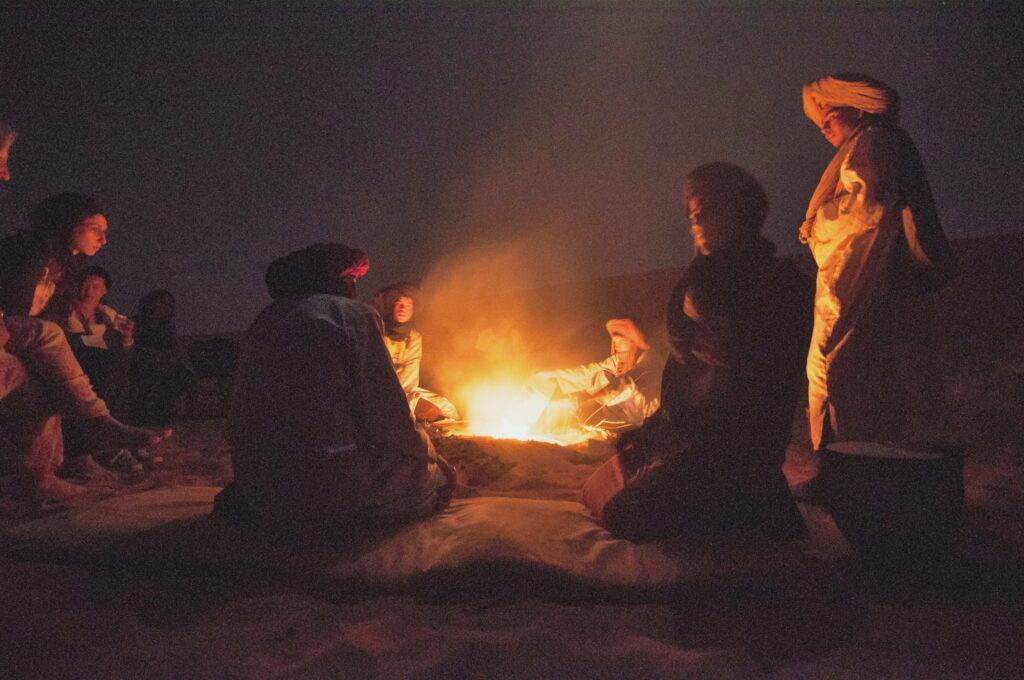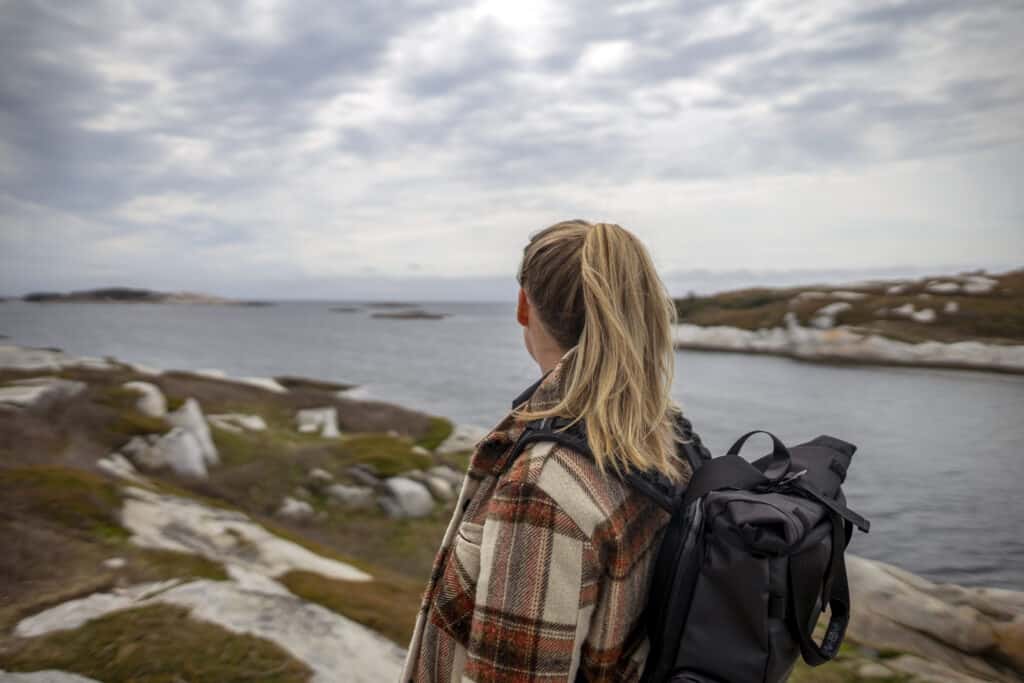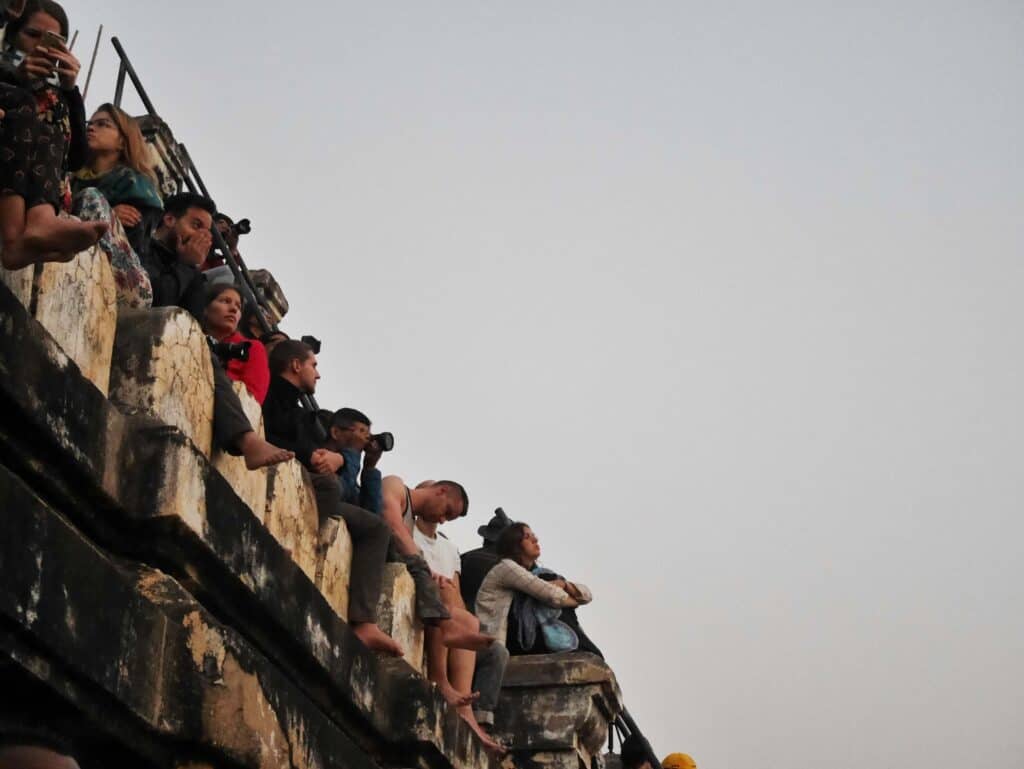Last Updated on July 23, 2023
What is dark tourism? Can dark tourism be good? And why is there controversy around this type of travel?
The idea of dark tourism has been talked about more and more in recent years, probably in part thanks to shows like Dark Tourist, and Chernobyl. I’ve been a dark tourist myself. When I lived in The Netherlands, I visited a few concentration camp sites, including Auschwitz.
I’ve visited Ground Zero in New York City, and I’ve been to the Killing Fields in Cambodia. All of these places have a history of human suffering, which is why visiting them is considered dark tourism.
I didn’t hear the term dark tourism until long after I’d been a dark tourist myself. Hearing it got me thinking about those experiences in a different way. It made me wonder if there was something wrong about having visited Auschwitz, or the Killing Fields.
It made me think about how I had approached those experiences, and what the point of them had been. Personally, I think that dark tourism is an important type of tourism – but it has to be approached in the right way. Let’s dig in.

What is Dark Tourism?
The term dark tourism was coined in 1996 by J. John Lennon and Malcolm Foley, two faculty members at Glasgow Caledonian University. Today, the term is generally used to describe travel to places that are historically associated with death and tragedy. It’s also sometimes called black tourism, thanatourism, or grief tourism.
In a 2017 paper, Lennon explained, “For many years humans have been attracted to sites and events that are associated with death, disaster, suffering, violence and killing.”
He emphasizes that dark tourism isn’t a new phenomenon: “From ancient Rome and gladiatorial combat to attendance at public executions in London and other major cities of the world, death has held an appeal.”
Dark tourism sites are all associated with tragic history. They are sites of atrocities, accidents, genocide, natural disasters or infamous death. It seems grim that people visit these places, but the reality is that these places represent important human history.
According to Lennon, “Tourism and death enjoy a curious relationship. Death and acts of mass killing are a major deterrent for the development of certain destinations and yet such acts can become the primary purpose of visitation in others.”
Chernobyl, the site of the world’s worst nuclear disaster which resulted in thousands of deaths, is an example of this dichotomy.
After the disaster in 1986, the site was left almost entirely untouched. But in 2002 tourists began showing interest, and then in 2019 it was announced that Chernobyl would become an official tourist attraction in Ukraine. Now, tourists can book official guided tours of the site.

Dark tourism destinations
In the USA, tourists can visit the childhood home of Jeffrey Dahmer, a serial killer, in Bath, Ohio. In Dallas, Texas it’s possible to take a JFK assasination tour. And in New York City, Ground Zero tours bring visitors to where the World Trade Centre towers fell in 2001.
When I traveled in South East Asia I visited two dark tourism sites: the Choeung Ek Killing Fields in Phnom Penh, Cambodia and the War Remnants Museum in Ho Chi Minh, Vietnam.
I hadn’t learned very much about the events associated with these sites growing up: the rule of the Khmer Rouge regime, or the Vietnam War. And so learning about these events, as told by the communities who survived them, was educational and thought-provoking.
It helped me to understand both Cambodia and Vietnam in a way that I certainly wouldn’t have had I not visited these sites.
There are dark tourism destinations all around the world. Because the term has a provocative sound to it, I think many people associate it with extreme or controversial examples of it.
But in reality, most of us have engaged in dark tourism without even realizing it. Many highly-trafficked tourist sites are historically associated with death and tragedy.
For example, Auschwitz-Birkenau, the Nazi concentration camp, receives over 1 million visitors per year. Much of human history is dark, and so it makes sense that many historical locations that tourists visit have dark pasts associated with them.

Is Dark Tourism Ethical?
There’s no straight answer to the question of whether or not dark tourism is ethical. For some, dark tourism feels inappropriate. It can come off as voyeuristic, or exploitative of human suffering.
The alternative view is that dark tourism is a tool for education. It can provide an opportunity to engage with history and reflect on tragedy. Often, visiting dark tourism sites makes tragic events feel more “real” which can be humanizing.
I remember when I visited Auschwitz-Birkenau, the Nazi concentration camp where over 1million people were systemically killed. It was a difficult and emotional day, but I felt that it was important.
I had grown up hearing stories of the Second World War from my Dutch grandparents, I had studied the war in university, and I had read many books authored by Holocaust survivors. I knew what Auschwitz was intellectually, but visiting the place in all it’s realness was a different experience.
At the Dedication Ceremonies for the United States Holocaust Memorial Museum in 1993, Holocaust survivor Elie Wiesel said, “For the dead and the living, we must bear witness.”
He explained, “a museum is a place, I believe, that should bring people together, a place that should not set people apart. People who come from different horizons, who belong to different spheres, who speak different languages? They should feel united in memory. And, if possible at all, with some measure of grace, we should, in a way, be capable of reconciling ourselves with the dead. To bring the living and the dead together in a spirit of reconciliation is part of that vision.”

Wiesel’s idea that a museum (like Auschwitz) should bring the living and the dead together in reconciliation is why I lean toward believing that dark tourism can be ethical. I think that the key, though, is the way in which dark tourism sites are presented to the public and the way in which visitors approach it.
Auschwitz, and many other dark tourism sites, are presented as educational museums. If visitors can embrace the educational experience and visit with care and respect, I don’t think dark tourism is unethical.
Tips to Use Dark Tourism For Good
Here are a couple tips to keep in mind when visiting a dark tourism site, so that you can be respectful and get the most out of your visit.
Consider your intention before going.
Take some time to self-reflect on why you’d like to visit this particular place. Making sure your intention is to heighten your understanding of the site, and the events that happened there is a good place to start. It’s also good to consider how it might affect you. Dark tourism experiences can be emotionally difficult, so make sure you’re comfortable with where you’re going.
Be respectful of the space while you’re there.
This goes for traveling anywhere I’d say, but it’s especially important when visiting dark tourism sites. It’s always a good call to research in advance local customs and norms so that you know how to show respect. And, be careful with photo taking. Avoid any photography or videography that could come off as exploitative or sensationalizing.
Aim to make your visit an educational one.
Doing some research before your visit is a good starting point, because it enables you to go into the experience with some base knowledge. If hiring a guide or educational tour is an option, it’s worth investing in so you can get the most out of your visit.
More from Pina Travels:
- 10 Ways to Be a More Responsible Tourist
- Responsible Travel: Cultural Appropriation vs. Appreciation
- 12 Tips for Managing Mental Health and Travel


Erin has been traveling for over a decade, both solo, and with her partner. She’s now traveled to countries across 6 continents, and has lived in 2 countries abroad. Erin also hosts the travel podcast, Curious Tourism, where she interviews travel industry thought leaders and experts about responsible tourism. Learn more about Erin, and get in touch with her, here.





I think dark tourism is very important. I have a whole "never forget" series on visiting WWII sites in Europe, including the concentration camps. I’m really glad that you shared this post. Thank you.
I’ve never heard of this concept but it totally makes sense to call it dark tourism. I think if we don’t learn from our history we’re doomed to repeat it so these places should absolutely be visited. We are Jehovah’s Witnesses and some of our family were also imprisoned/tortured during the Holocuast. Not many people know that – but some of these same things are happening to JW’s in Russia today. If more people visited these places the world would be a better place.
Never heard of this. Interesting. Thanks for sharing!!!
This was a really thoughtful and interesting take on a complicated subject. I appreciated reading this!
Very interesting article, I always wanted to visit Chernobyl and Ukraine in general, so that was a great read. Thank you for sharing!
Guess I never knew that I liked to be a dark tourist. I have visited a number of memorial sites, holocaust museums, and Dachau. I still would love to visit more. I believe it gives a great respect for our past and never forgetting.
This is very interesting. I had never actually heard the term "dark tourism" before, but of course it makes sense. This is definitely a complicated topic and one that you explained very well.
I’ve visited a few places associated with painful history but didn’t know there was a term for it. Sometimes It’s hard to know how can it effect you emotionally.